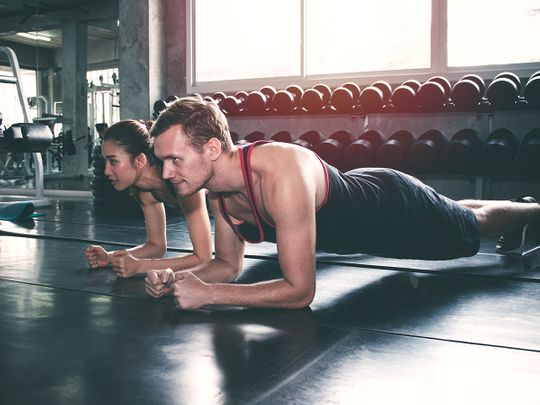Blood
Static isometric exercise is best for lowering blood pressure: Study
Image Credit: Shutterstock
Washington: According to a pooled data analysis of the available evidence from clinical trials, which was published online in the British Journal of Sports Medicine, static isometric exercises—the kind that involves engaging muscles without movement, such as wall squats and planks—are the best for lowering blood pressure.
However, the results show that ‘cardio’ (aerobic exercise), dynamic resistance training, like squats, press-ups, and weights, and high-intensity interval training, or HIIT for short (episodic short bouts of high-intensity exercise interspersed with short periods of recovery at a lower intensity), are all effective.
The researchers contend that it may be time to review the current recommendations for exercise in the management and prevention of high blood pressure.
Image Credit: Shutterstock
Aerobic (or “cardio”) exercise, such as walking, running, and cycling, is the type that is typically advised for controlling blood pressure. Previous published research demonstrates that exercise in general is associated with significant reductions in blood pressure.
However, the researchers argue that because this recommendation is largely based on older data that does not include newer exercise types like HIIT and isometric exercise, it is likely out of date.
They searched through research databases looking for clinical trials reporting the effects of an exercise training intervention lasting 2 or more weeks on resting blood pressure in an effort to potentially update knowledge on the best type of exercise for controlling blood pressure.
read more
-
Gene therapy eyedrops restored a boy’s sight
-
Probiotics may help slow age-related cognitive decline
-
Emotional eating: Do you eat even when not hungry?
-
Why White men experience biggest cognitive declines after retirement
Healthy resting blood pressure was defined as reading below 130/85 mmHg; pre-high blood pressure as 130–139/85–89 mmHg; and high blood pressure as 140/90 mmHg or more.
Systolic blood pressure, the first number in a reading, measures arterial pressure when the heart beats; diastolic blood pressure, the second number, measures arterial pressure between beats.
In all, 270 randomised controlled trials published between 1990 and February 2023 were included in the final analysis, with a pooled data sample size of 15,827 participants.
The pooled data analysis showed significant reductions in resting systolic and diastolic blood pressure after all the various categories of exercise, but with the largest falls in both systolic and diastolic blood pressure after isometric exercise training.
The reductions in blood pressure after aerobic exercise training amounted to 4.49/ 2.53 mmHg; 4.55/3.04 mmHg after dynamic resistance training; 6.04/2.54 mmHg after combined training; 4.08/2.50 mmHg after HIIT; and 8.24/4 mmHg after isometric exercise training.Secondary analyses revealed wall squats (isometric) and running (aerobic) as the most effective individual exercises for reducing systolic blood pressure (90.5%) and diastolic blood pressure (91%), respectively, with isometric exercise, overall, the most effective for reducing both blood pressure elements.
The researchers acknowledge that variations in the types of participants included across the clinical trials and differences in statistical and methodological processes and exercise interventions may have influenced the findings, and so should be interpreted in light of these limitations.
But they nevertheless concluded, “Overall, isometric exercise training is the most effective mode in reducing both systolic and diastolic blood pressure. These findings provide a comprehensive data-driven framework to support the development of new exercise guideline recommendations for the prevention and treatment of arterial hypertension.”

